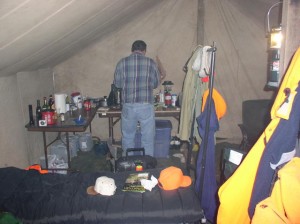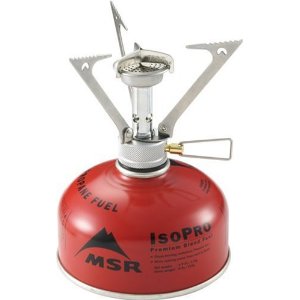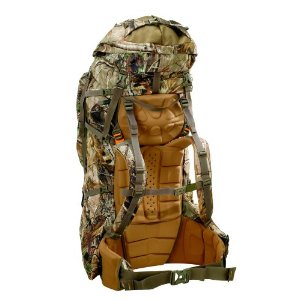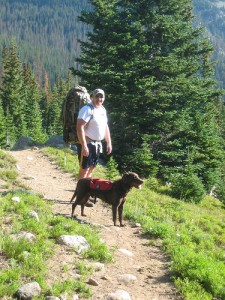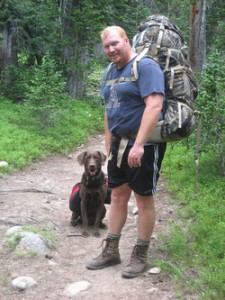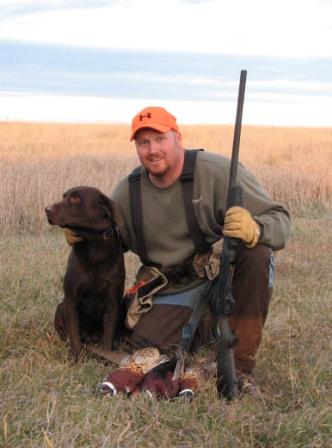What is the best type of knife to carry when you are hunting? A sharp one! All kidding aside, I have read numerous articles written by experts in the field, all suggesting that you should have this type of knife for skinning and this type of knife for eviscerating the animal once it is down and yet a whole other type of knife doing the camp chores. Do you need all these different types of knives? Sure! It is like asking your wife if she needs all those shoes. Does she wear them all? Probably not and you probably won’t use all of the knives that you collect throughout your hunting career. Myself, I have started carrying three knives with me when I go to the field. Is that a lot? Maybe, but after a number of years of hunting I have decided that that is what works for me. If you have ever cleaned an elk you would know exactly how fast a knife can dull and how nice it is to have a good sharp knife at the ready.
Here is what I carry and why.
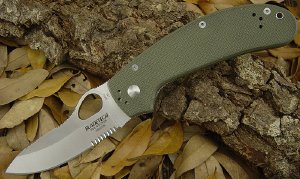 Anytime that I am hunting I always carry a folding lock-blade pocket knife. The one that I am currently carrying is a BladeTech Hunter. It has a drab olive G-10 handle and a stainless steel blade. The knife itself is extremely light weight, with most of the knifes weight being in the blade. It is very balanced when open and the blade has a thick spine that adds to its
Anytime that I am hunting I always carry a folding lock-blade pocket knife. The one that I am currently carrying is a BladeTech Hunter. It has a drab olive G-10 handle and a stainless steel blade. The knife itself is extremely light weight, with most of the knifes weight being in the blade. It is very balanced when open and the blade has a thick spine that adds to its
stiffness. Also, it is easy to sharpen and it holds a good edge. I use this for most of my everyday chores. I try not to use it on animals. Not that it wouldn’t do a great job, but just because when you are in the field, folding knives tend to be a little bit more
difficult to clean and if you have ever gutted an antelope, you will find out real quick how tough it is to get the loose hair out of the handle and folding mechanism of the knife.
For the majority of my animal work I have switched over to using fixed blade knives. I carry these knives in my pack so I am not concerned with how they carry on my belt.
Mostly I prefer the drop pointed blades on these knives. However, I am currently using a Knives of Alaska Light Hunter that is a pure skinning knife. This knife features a non-slip handle and also offers a gutting hook, which I have become quite partial to. It isn’t the lightest knife that I carry. Even though it is an overall short knife. It has a very heavy blade and is very stout. The company claims that it could even be used as a mini cleaver! I haven’t used it for that purpose yet, but I am sure that you could use it to chop through the H-bone or rib cage of an elk if need be. I have only had
knife. This knife features a non-slip handle and also offers a gutting hook, which I have become quite partial to. It isn’t the lightest knife that I carry. Even though it is an overall short knife. It has a very heavy blade and is very stout. The company claims that it could even be used as a mini cleaver! I haven’t used it for that purpose yet, but I am sure that you could use it to chop through the H-bone or rib cage of an elk if need be. I have only had
this knife for a season and I was only able to use it on a mule deer that I shot last fall. The knife performed superbly and held a good sharp edge throughout the whole process. The other knife that I carry is a Spyderco Temperance fixed-blade, drop point knife.
Spyderco is more known for there unique designs and folding knives, but with this one they hit the nail on the head. What I look for in a knife, is a comfortable non-slip handle, a stiff spine and the
ability to keep and maintain a sharp edge. This knife meets all these criteria. Last year on an antelope hunt I 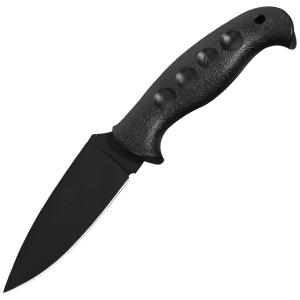 was able to clean, split the rib cage and H-bone, quarter and skin three antelope before the knife needed to be resharpened. Then when I did resharpen it, a couple of swipes on the stone was all it needed to be razor sharp. This is a real meat and potatoes type of knife that has found a permanent home in my pack.
was able to clean, split the rib cage and H-bone, quarter and skin three antelope before the knife needed to be resharpened. Then when I did resharpen it, a couple of swipes on the stone was all it needed to be razor sharp. This is a real meat and potatoes type of knife that has found a permanent home in my pack.
In all it doesn’t really matter what type of knives you carry as long as they are sharp! A dull knife is a sure way to get hurt and to make an easy job, a difficult job. Let me know what you like. I am always looking for something to take the work out of the work once the animal is on the ground. Good luck.
